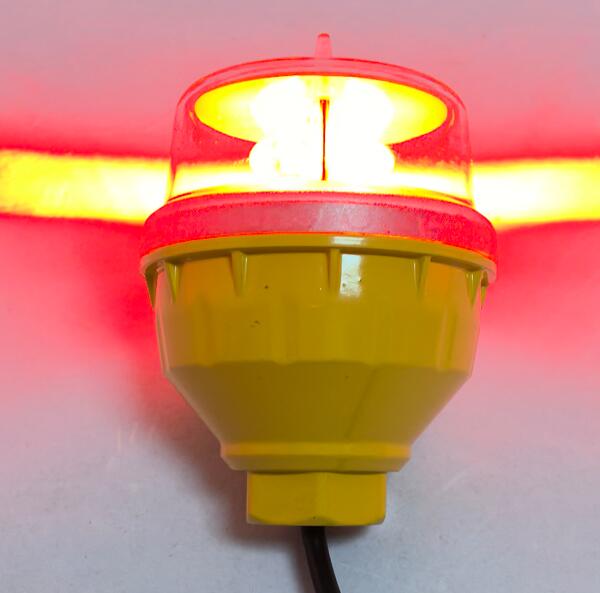FAA L810: Enhancing Aviation Safety with Efficient Obstruction Lighting Solutions
In the world of aviation, safety is paramount. As air traffic continues to grow, ensuring the visibility of potential obstructions becomes increasingly critical. One of the essential tools in this effort is the FAA L810 obstruction light . This compact, low-intensity lighting device plays a vital role in marking hazards to air navigation, particularly at night or during low visibility conditions. Designed according to Federal Aviation Administration (FAA) standards, the FAA L810 is a trusted component in aviation infrastructure, from communication towers to wind turbines and tall buildings.
Understanding the FAA L810
The FAA L810 is classified as a low-intensity obstruction light. It emits a steady red light, typically with an intensity of 32.5 candela, designed to warn pilots of obstacles below 200 feet (61 meters) above ground level. These lights are generally used in situations where high-intensity lighting is unnecessary or could create visual clutter.
The FAA L810 light operates continuously from dusk to dawn and is usually part of a larger obstruction lighting system. Its simplicity and reliability make it ideal for both standalone and integrated applications. The design standards for these lights are outlined in FAA Advisory Circular 150/5345-43, ensuring consistency, safety, and compatibility across a wide range of installations.

Key Applications of FAA L810
The FAA L810 is a versatile lighting solution used across various sectors:
Telecommunication Towers: These structures often rise above the surrounding landscape and require proper lighting to be visible to aircraft. FAA L810 lights are installed at multiple heights on the tower, depending on its overall structure.
Wind Turbines: As renewable energy projects expand, the number of tall wind turbines increases. FAA L810 lights help make these installations more visible, particularly in remote areas.
| faa l810 |
Chimneys and Smokestacks: Industrial facilities often include tall exhaust stacks, which need to be marked to avoid aircraft collisions.
Buildings and Skyscrapers: In urban areas, tall buildings may use FAA L810 lighting to ensure their presence is clear to pilots, especially when located near flight paths or helipads.
Cranes and Construction Equipment: Temporary structures also require marking. FAA L810 lights can be mounted on cranes and other tall machinery during development phases.
Features and Benefits
FAA L810 obstruction lights are valued for their efficiency and performance. Key features include:
| faa l810 light |
Energy Efficiency: Modern FAA L810 lights use LEDs, significantly reducing energy consumption compared to older incandescent models.
Durability: These lights are designed to withstand extreme environmental conditions, including high winds, heavy rainfall, and temperature fluctuations.
Minimal Maintenance: The use of LED technology extends the lifespan of the lights and reduces the need for frequent servicing.
Ease of Installation: Compact and lightweight, FAA L810 lights are easy to install on a variety of structures, from steel towers to composite turbine masts.
Compliance: Fully compliant with FAA regulations, ensuring legal operation and flight safety assurance.
Importance in Aviation Safety
While the FAA L810 may appear simple, its role in aviation safety is profound. Low-intensity lights help prevent aircraft from colliding with obstacles, particularly during approach, takeoff, or low-altitude maneuvers. They provide a clear, consistent signal to pilots flying under Visual Flight Rules (VFR), especially at night.
Without such systems, even small or medium-height obstructions could pose significant risks. The FAA L810 creates a visual safety net, helping pilots maintain situational awareness. In this way, it contributes not only to the safety of air navigation but also to the protection of people and property on the ground.
Integration with Modern Systems
With the evolution of smart infrastructure, the FAA L810 has also adapted. Many models now feature remote monitoring capabilities, allowing operators to track performance and detect failures in real time. Integration with control systems enables automated operation, adjusting functionality based on light levels or weather conditions.
In multi-light systems, FAA L810 units are often combined with medium- or high-intensity lights (such as FAA L864 or FAA L865) to create tiered marking solutions for taller structures. The L810 typically marks the lower levels or intermediate sections, contributing to a comprehensive visibility plan.
Environmental Considerations
The shift from incandescent to LED FAA L810 lights not only enhances performance but also supports environmental sustainability. LEDs use significantly less energy, reducing operational costs and environmental impact. Their long service life minimizes waste and resource use.
In addition, LED FAA L810 lights produce less electromagnetic interference, which is important near sensitive communication equipment. These improvements make modern L810 lights more suitable for deployment in remote, eco-sensitive, or technically complex environments.
The FAA L810 is more than just a red light—it’s a critical part of the aviation safety framework. As aviation infrastructure continues to evolve, so too does the need for reliable, standardized lighting. The FAA L810 remains a key element in this system, offering dependable performance, regulatory compliance, and adaptability to a wide range of applications.
From wind farms to urban skyscrapers, FAA L810 obstruction lights quietly support safe air navigation across the globe. Their continued innovation and integration into modern systems ensure they will remain indispensable for years to come.
